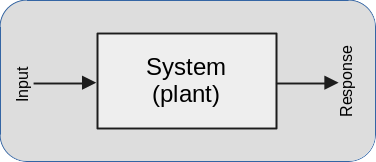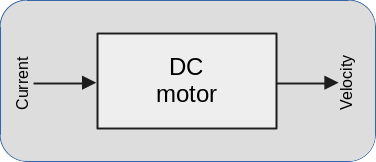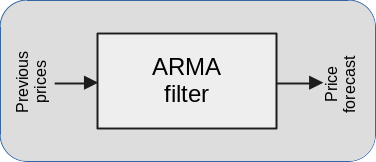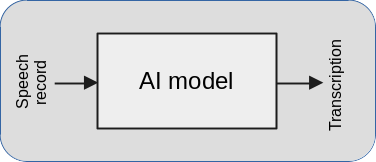Systems modeling is the science of representing a real-life physical system with mathematical expressions. A physical system can be shown in a diagram as a block with an input and an output terminal which is assumed to respond to input and its initial conditions.

White-box modeling
When the internal structure of the system is known, the designer can use this information to create a mathematical representation. The designer should conceptualize its physical components by the appropriate abstraction techniques derived from natural sciences and mainly considers the dominant properties of the system. Neglecting minor properties and idealizing its working principles are common practices in the systems modeling research.
Let us consider modeling a DC motor as an example.
A DC motor connected to a voltage source can be modeled by the current flow through its two power input terminals and the acceleration of its rotating shaft (rotor). By defining the relation between these time varying signals, one can structure a system model which defines the electrical current as the input and velocity of the shaft as the output.

This model neglects electrical effects and non-linearities (magnetic saturation) in the rotor and still can be very accurate to define the input/output relationship in practical operating conditions. Also, It can be further simplified if the mass of rotating part is very small. Then, the model becomes as simple as a first order low pass filter.
Black/gray-box modeling
In this case, the designer has few or no information about the underlying dynamics of the system. In this case, it is a common practice to collect input/output data by controlled experiments or derive it from already available historical data first. Then a model can be fit to data, by assuming the input/output relationship is a function of many unknown parameters and mostly a nonlinear relationship.
The proposed function which maps input to output can be structured by the small amount information about the system or by an educated guess. For example:
ARMA modeling of financial data with a prior assumption of price variations are generated from a stationary random process.

Speech to text converters with the prior knowledge on spoken language that it can be divided into a series of phonemes.

As it can be understood from the examples, systems modeling is the central part of a vast amount of research disciplines. It plays a crucial role in tailoring natural phenomena to suit technical goals.